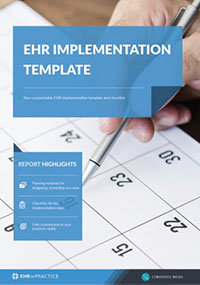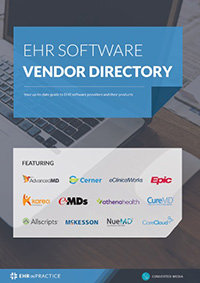Five post go-live EHR challenges
Going live with your EHR system is only the beginning of your real life implementation into your practice. Many times, post Go-Live work requires just as much effort as all of the training and planning prior to launch. Recognize that EHR implementation is an ongoing process, one that continuously evolves as you learn new features and implement efficient systems into your practice. Challenges that you can expect to encounter post Go-Live include:
1. Patient satisfaction
Although most patients will be understanding of a glitch to your smooth operations, they will likely have little tolerance for ongoing chaos. Therefore, it is essential that your administrative team pays great attention to patient satisfaction through verbal communication or patient satisfaction surveys. Keep your focus on optimal customer service and patient satisfaction to reduce frustration post Go-Live.
2. Regaining productivity standards
During the initial week of EHR system launch, you can expect that productivity will be low. However, it is important to set reasonable expectations to restore normal patient caseloads, despite implementation of a new documentation system. Remind staff and clinicians that the new EHR system is designed to improve productivity, so reasonable expectations must be set in order to keep the business running.
Get advice on EHR go-live, training and more using our step-by-step EHR implementation guide
3. Patient communication
Patient communication systems must be in place to ensure that patients are receiving necessary phone calls after lab-work or imaging studies are done. Ensure that alerts are given to the clinicians, nurses or practice managers so that the patient is not left waiting on test outcomes. When implementing a new system, oftentimes patient communication is negatively impacted.
4. Follow-up training
Post EHR Go-Live, your staff and management will likely identify areas that are not running as smooth as they should be. These areas are likely responsibilities or systems that will require further training. Identify all areas of concern and determine what department or individual will require further training. It is best to provide additional training early on, instead of waiting around for continued mistakes.
5. EHR optimization and implementing additional features
Once your day to day operations are running in a smooth and efficient manner, you can focus on optimizing your data collection, reporting, billing and operations. Identify areas further improving practice efficiency and complete an additional course of training for your staff. Utilize the services and support of your EHR vendor to educate your users on additional features of the electronic system. These additional features will likely be targeted toward your administration, billing and scheduling departments.
Remember to keep the lines of communication open between your staff and management team. Keep at least one individual assigned as the point person for EHR contact, training, and troubleshooting. This way, your users will feel they have the support and resources to perform their job duties optimally.
Free white paper

EHR implementation: 6 steps to success
Step-by-step information on how to implement EHR effectively

Featured white papers
-

EHR Implementation Template
Get all the planning tools you need to make your EHR implementation a success
Download -

EHR implementation: 6 steps to success
Step-by-step information on how to implement EHR effectively
Download -

EHR Vendor Directory
Get the most up-to-date directory of EHR software vendors. Find the best software for your practice.
Download
Related articles
-

EHR Implementation Plan: Your 8-Step Checklist
Your comprehensive checklist for creating an EHR implementation plan.
-

A template for your EHR project implementation timeline
Determining your EHR project timeline will prove tricky, but having some expectations of time fra...
-

5 important areas of EHR training during implementation
Successful EHR implementation is not possible without crucial EHR training

